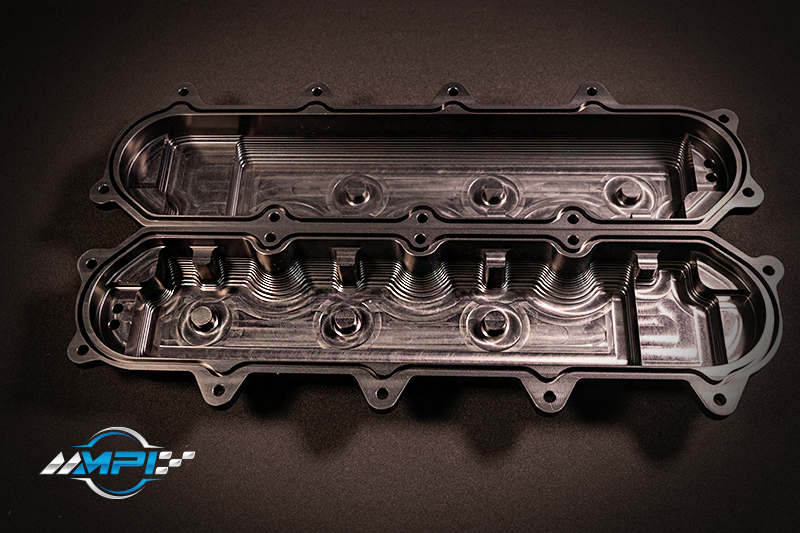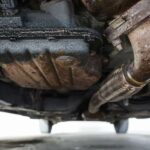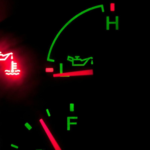
2004 Toyota Corolla Oil Leak: Causes, Fixes & Prevention

- Introduction
- Common Signs of an Oil Leak
- Why Oil Leaks Are a Big Deal
- Common Causes of Oil Leaks in a 2004 Toyota Corolla
- How to Diagnose an Oil Leak
- DIY Fixes vs. Professional Repairs
- Step-by-Step: Fixing Common Leak Sources
- Cost of Repairing an Oil Leak
- How to Prevent Future Oil Leaks
- How Long You Can Drive With an Oil Leak
- Safety Tips When Dealing with Oil Leaks
- When It’s Time to Replace the Engine
- Conclusion
- FAQs
Introduction
You walk outside in the morning, coffee in hand, and spot a dark puddle under your car. Uh-oh… oil leak. If you drive a Toyota Corolla (2004), this scenario is more common than you might think. While it may start as a few drops, ignoring it can lead to bigger (and more expensive) problems down the road.
In this guide, we’ll break down the most common reasons your 2004 Corolla might be leaking oil, how to fix it, and—most importantly—how to prevent it from happening again.
Common Signs of an Oil Leak
Not sure if your car is leaking oil? Here are a few telltale signs.
Oil spots under your car
If you notice dark, greasy spots on your driveway or garage floor, chances are your engine’s oil is escaping somewhere.
Burning oil smell
When leaking oil drips onto hot engine parts, it burns and gives off a distinct, sharp odor.
Engine warning light
The oil pressure warning light on your dash may pop on if the leak is significant enough to lower oil levels.
Why Oil Leaks Are a Big Deal
Some people brush off oil leaks as “no biggie.” But here’s why you shouldn’t.
Engine performance issues
Oil lubricates and protects your engine’s moving parts. Low oil levels can lead to friction, overheating, and engine damage.
Environmental concerns
Leaking oil doesn’t just stay in your driveway—it can seep into storm drains and harm the environment.
Common Causes of Oil Leaks in a 2004 Toyota Corolla
Worn valve cover gasket
This is one of the most common culprits. The gasket seals the top of the engine, and when it wears out, oil starts seeping down the sides.
Faulty oil pan gasket
The oil pan is at the bottom of the engine, holding the oil. A damaged gasket here can cause slow, steady leaks.
Bad crankshaft seal
The crankshaft seal keeps oil inside the engine. If it’s worn or cracked, it can leak oil toward the front or rear of the engine.
You may be interested in reading 2011 Toyota Corolla Oil Leak Problem: Causes, Fixes & Prevention Tips
2011 Toyota Corolla Oil Leak Problem: Causes, Fixes & Prevention TipsLoose or damaged oil filter
Sometimes, a simple fix is tightening or replacing the oil filter.
PCV valve issues
A clogged PCV valve can build pressure inside the engine, forcing oil out through weak spots.
How to Diagnose an Oil Leak
Finding the source of the leak is the first step.
Step 1: Check oil levels
Pop the hood and pull out the dipstick. If the oil level is low, it’s a clue that oil is escaping somewhere.
Step 2: Inspect under the vehicle
Look for fresh oil drips or wet spots underneath.
Step 3: Use UV dye or leak detection tools
These help pinpoint hard-to-see leaks. Add dye to the oil, run the engine, and use a UV light to spot the source.
Step 4: Examine gasket areas
Check the valve cover, oil pan, and crankshaft seals for signs of oil seepage.
DIY Fixes vs. Professional Repairs
When you can fix it yourself
If it’s something simple like tightening an oil filter or replacing a gasket, many DIYers can handle it with basic tools.
When to call a mechanic
If the leak involves crankshaft seals, timing cover, or multiple components, it’s safer (and often cheaper long-term) to get professional help.
Step-by-Step: Fixing Common Leak Sources
Replacing the valve cover gasket
Tools and materials needed
- Socket set
- Screwdriver
- New valve cover gasket
- Torque wrench
- Engine degreaser
Removal process
- Let the engine cool completely.
- Remove ignition coils and any components blocking the valve cover.
- Unscrew the bolts holding the valve cover in place.
Installing the new gasket
- Clean the mating surfaces thoroughly.
- Place the new gasket and carefully reinstall the valve cover.
- Tighten bolts to the recommended torque.
Tightening or replacing the oil filter
Locate the filter, tighten it snugly (but not overly tight), or swap it out with a new one if it’s damaged.
Repairing or replacing the oil pan gasket
This usually involves draining the oil, removing the oil pan, cleaning off the old gasket, and installing a fresh one with sealant if needed.
Cost of Repairing an Oil Leak
DIY repair costs
Replacing a valve cover gasket yourself might cost around $20–$50 for parts. An oil pan gasket could be $30–$80.
You may be interested in reading 2011 Toyota Corolla Oil Leak Problem: Causes, Fixes & Prevention Tips
2011 Toyota Corolla Oil Leak Problem: Causes, Fixes & Prevention Tips 2014 Toyota Corolla Oil Leak — Complete Guide
2014 Toyota Corolla Oil Leak — Complete GuideProfessional repair costs
A shop may charge $150–$400 for gasket replacement, depending on labor time. More complex leaks (like crankshaft seals) can run $500–$1,000.
How to Prevent Future Oil Leaks
Regular oil changes
Sticking to your oil change schedule keeps seals healthy and prevents pressure buildup.
Check gasket condition
Inspect your engine regularly. Catching worn gaskets early saves money down the line.
Monitor oil levels
A quick weekly dipstick check can alert you to leaks before they get serious.
How Long You Can Drive With an Oil Leak
Technically, you can drive with a minor oil leak for a short while, but it’s risky. A small leak can quickly become a big problem—think engine failure or a sudden breakdown. The smart move? Fix it as soon as possible.
Safety Tips When Dealing with Oil Leaks
Clean spills immediately
Oil is slippery and a fire hazard. Wipe up any drips in your garage or driveway right away.
Avoid engine overheating
Low oil means more friction. If your temperature gauge spikes, pull over immediately.
When It’s Time to Replace the Engine
If your Corolla has high mileage and multiple oil leaks from major seals, engine replacement may be more cost-effective than repeated repairs. It’s a tough call, but sometimes it’s the smartest long-term move.
Conclusion
An oil leak in your 2004 Toyota Corolla isn’t something to ignore. Whether it’s a simple gasket replacement or a more complex seal issue, early detection can save you a lot of time, money, and frustration. A little preventive maintenance goes a long way toward keeping your engine clean, efficient, and leak-free.
FAQs
What happens if I ignore an oil leak?
Ignoring a leak can lead to low oil levels, engine damage, or even complete engine failure.
How much oil loss is normal?
A few drops over weeks might not be alarming, but puddles or rapid oil loss are definite red flags.
Can an oil leak damage other parts?
Yes. Oil can damage rubber components, wiring, and even cause smoke or fires if it hits hot engine parts.
You may be interested in reading 2011 Toyota Corolla Oil Leak Problem: Causes, Fixes & Prevention Tips
2011 Toyota Corolla Oil Leak Problem: Causes, Fixes & Prevention Tips 2014 Toyota Corolla Oil Leak — Complete Guide
2014 Toyota Corolla Oil Leak — Complete Guide Toyota Corolla Oil Pressure Sensor Leak: Causes, Fixes & Expert Tips
Toyota Corolla Oil Pressure Sensor Leak: Causes, Fixes & Expert TipsHow often should I check for leaks?
Check your oil levels weekly and visually inspect under your car at least once a month.
Is an oil leak covered by insurance?
Usually, no. Standard auto insurance doesn’t cover mechanical wear and tear. Extended warranties might.
If you want to know other articles similar to 2004 Toyota Corolla Oil Leak: Causes, Fixes & Prevention you can visit the category Common Problems.
Deja una respuesta






More content of your interest